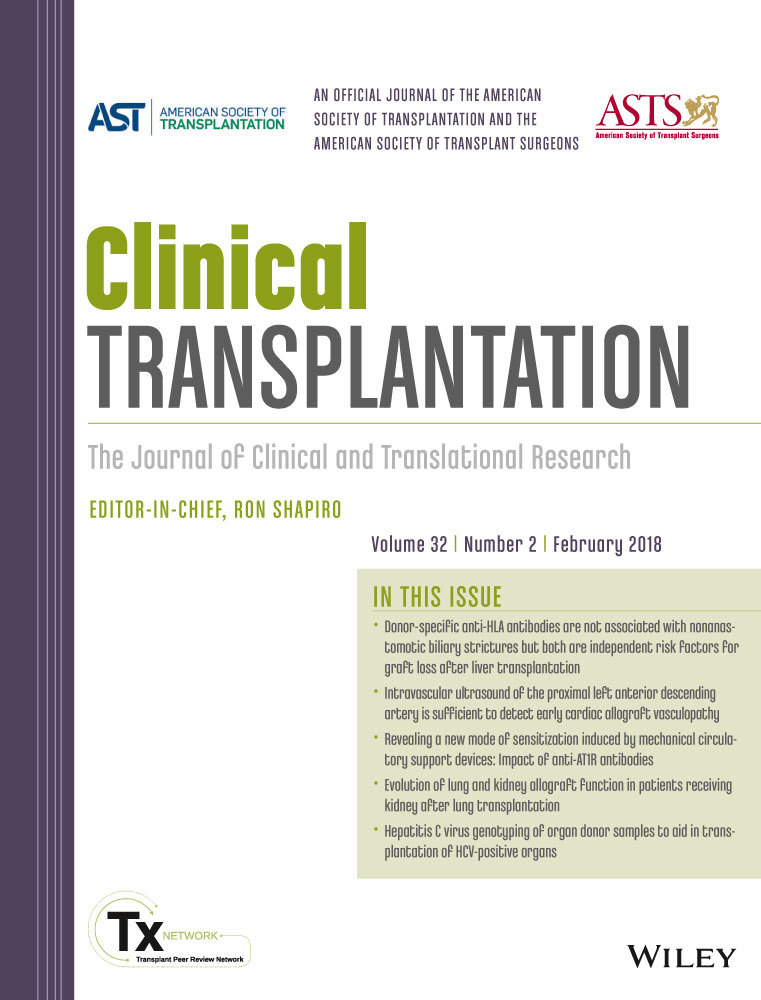Utility of transthoracic needle biopsy after lung transplantation
Abstract
The purpose of this study was to assess the diagnostic yield and complications of CT-guided transthoracic needle biopsy (TTNB) after lung transplantation. A database search identified all TTNB performed in lung transplant patients over a 14-year period. Forty-two biopsies in transplant patients (transplant group) were identified and matched to the next biopsy performed in native lungs by the same operator (nontransplant group) as a control. Primary outcomes recorded were diagnosis, diagnostic yield, pneumothorax requiring intervention, and symptomatic pulmonary hemorrhage. Biopsy outcomes were classified as diagnostic, not specifically diagnostic, and nondiagnostic. Patients in the transplant group were younger (P < .002). Emphysema along the biopsy trajectory was more commonly seen in the nontransplant group (P < .0006). Needle gauge, size of lesion, pleural punctures, lesion depth, and number of passes were not significantly different. Diagnostic yield was 71% in the transplant group and 91% in the nontransplant group. There were 20 of 42 (48%) malignant nodules in the transplant group compared to 31 of 44 (70%) nodules in the nontransplant group (P = .05). There were no complications in the transplant group. The nontransplant group had two pneumothoraces requiring intervention. TTNB after lung transplant is safe with a moderate diagnostic yield. Nonmalignant lesions are more common after lung transplantation.




